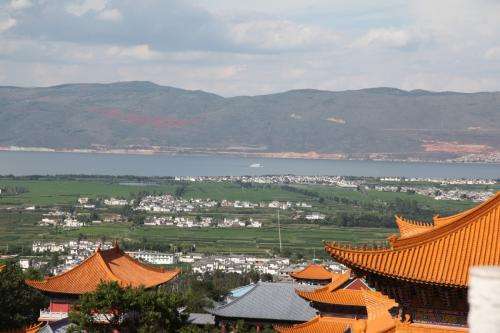Ancient copper and silver production created four times the pollution as today's methods

The ancient Mongols have a reputation for having been fierce warriors. A new study out of the University of Pittsburgh shows them to have been unmatched polluters.
Graduate student Aubrey Hillman recently published a paper in the journal Environmental Science & Technology that shows copper and silver production in southwest China produced tremendous quantities of harmful heavy metals, such as lead, silver, zinc, and cadmium, starting in 1500 BC and continuing through the era of the Mongol Yuan Dynasty (1271-1368 AD). Hillman is near to earning her PhD from Pitt's Department of Geology and Planetary Sciences in the Kenneth P. Dietrich School of Arts and Sciences under her adviser and department chair Mark Abbott.
In 2009, Hillman and colleagues took core samples from Lake Erhai in the Yunnan province in southwestern China. The site was chosen because of its proximity to Kublai Khan's famed silver mines—Khan was the grandson of Genghis Khan and founder of the Yuan Dynasty—and the area where ancient bronze artifacts had been found. The data from the samples surprised Hillman.
The researchers found that lead pollution in Lake Erhai peaked at 119 micrograms per gram of sediment in 1300 AD before then declining to around 30 micrograms per gram in 1420 AD. Peak pollution levels are three to four times higher than those generated by modern metallurgical methods, Hillman says.
"Notably, the concentrations of lead approach levels at which harmful effects may be observed in aquatic organisms," Hillman writes in the paper. "The persistence of this lead pollution over time created an environmental legacy that likely contributes to known issues in modern-day sediment quality."
"We went back in 2012 to confirm how widespread the pollution was," she continues. "Many studies have documented lead and metal pollution from early metalworking, but this study is the first to show that pollution was greater in the past than today. It shows that people may have been seriously impacting the environment for much longer than we thought."
And her findings, she says, may have practical use today.
"The (metallurgic) processes would have volatilized heavy metals and spread throughout the landscape [not just Lake Erhai]," she says, which could have implications for agriculture since, as recent reports suggest, as much as one-sixth of China's arable land is affected by excessive accumulation of heavy metals.
More information: "Environmental Legacy of Copper Metallurgy and Mongol Silver Smelting Recorded in Yunnan Lake Sediments." Environ. Sci. Technol., Article ASAP DOI: 10.1021/es504934r
Journal information: Environmental Science & Technology
Provided by University of Pittsburgh

















